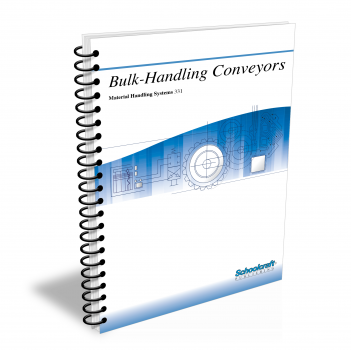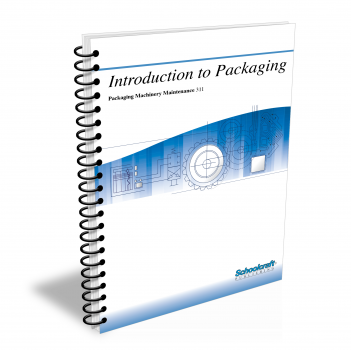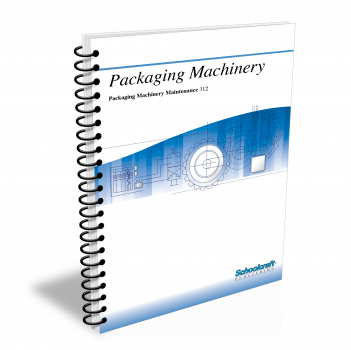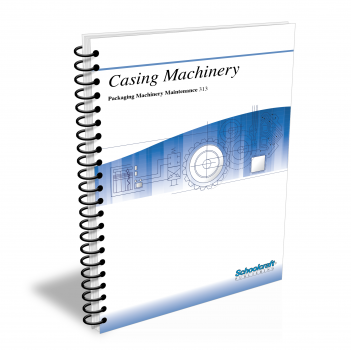Bulk-Handling Conveyors

Course Number: 331
The Bulk-Handling Conveyors textbook covers belt conveyors that carry coal, sand, gravel, grain and other loose materials. It acquaints the student with the terminology, basic structure, and operation of these systems. It includes detailed coverage of belts, belt cleaners, idlers, and feed/discharge devices, as well as an explanation of how to install, maintain, replace, and troubleshoot these components.
Does your curriculum require additional topics not included in this textbook? Build a customized version of the Bulk-Handling Conveyors textbook below.
Recommended Contact Hours – 8
Preview a Chapter
Available Supporting Material
- Table of Contents
- Exam Copies
- Suggested Titles
Table of Contents
Chapter 1: Conveyor Components
Topics: Conveyor profiles, pulleys, and idlers; Bulk-handling conveyor belts; Conveyor drive packages; Support components
Learning Objectives:
- Describe the basic operation of a bulk-handling belt conveyor and identify its major components.
- Name and explain the function of the different pulleys used in belt conveyors.
- Describe four popular conveyor drive-package arrangements.
- Explain the purpose and the operation of at least four of the support components of a bulk-handling belt conveyor.
Chapter 2: Bulk-Conveyor Belting
Topics: Belt plies; Storing and handling belts; Installation; Squaring ends, cutting; Belt fasteners; Vulcanized splicing; Tensioning, repairing, and replacing the belt; Troubleshooting
Learning Objectives:
- Describe the composition and structure of the three components of a bulk-handling conveyor belt.
- State correct storage and handling procedures for bulk conveyor belts.
- Detail the installation of a belt in a bulk conveyor system, including splicing and tensioning.
- Name the five points that require special attention in a preventive maintenance program for a belt conveyor system.
Chapter 3: Belt Cleaners and Idlers
Topics: Blade, brush, and plow type belt cleaners; Cleaning by rollover; Deck plates; Return idlers; Wing pulleys; PM, inspection, and troubleshooting
Learning Objectives:
- Describe the design and placement of blade, brush, and plow belt cleaners and the applications for which each one would be used.
- Name and describe the different types of blade belt cleaners.
- Describe the process of belt cleaning by rollover.
- Explain how devices such as wing pulleys, self-cleaning return idlers, and deck plates function as parts of a belt cleaning system.
- Describe the appropriate safety precautions to take when installing or maintaining belt cleaners.
- List the essential features of preventive maintenance and inspection for a belt cleaning system.
Chapter 4: Feed and Discharge Devices
Topics: Factors in loading and discharge; Skirting devices; Hoppers and accessories; Loading and discharge chutes; Spouting; Inspection; Troubleshooting
Learning Objectives:
- Explain two important factors in efficient conveyor loading and how they are affected by the two ways (directions) in which belt conveyors are loaded.
- Describe the construction and the purpose of skirtboards.
- Differentiate between a deadbed and a bed of fines and detail the use of both in chute loading of conveyors.
- Name and explain the operation of three special types of discharge spouts.
Chapter 5: Safety and Troubleshooting
Topics: Loading and discharge points; Emergency controls; Preparing for maintenance; Common problems, possible remedies
Learning Objectives:
- Differentiate between a conveyor profile and a system profile.
- Point out the special hazards for workers at conveyor loading and discharge points.
- Explain the function and operation of the following emergency controls: electrical interlocks, backstops, level switches, pull-cords, and conveyor belt alignment switches.
- Name at least five safety measures employees should take to protect themselves when working on or near bulk-handling conveyors.
- Describe the three-step procedure for preventing accidental startup of a conveyor during maintenance work.
- Name at least one specific shore or safety caution required in maintenance work on each of the following: belts, idlers, pulleys, and drive systems.
- Identify common problems (and their probable causes) found in troubleshooting idlers, pulleys, takeup bearings, and conveyor drives.
Request Exam Copies
Exam Copies
Ready to see a copy of our textbooks? After selecting which textbooks you’d like to review for your course, you can submit your request by either logging in or creating an account so we know where to ship your exam copies. A representative from Schoolcraft will contact you to confirm and finish processing your request.
Exam copies are always free and yours to keep.
Selected Exam Copies
none selected
* Maximum of five copies can be ordered


